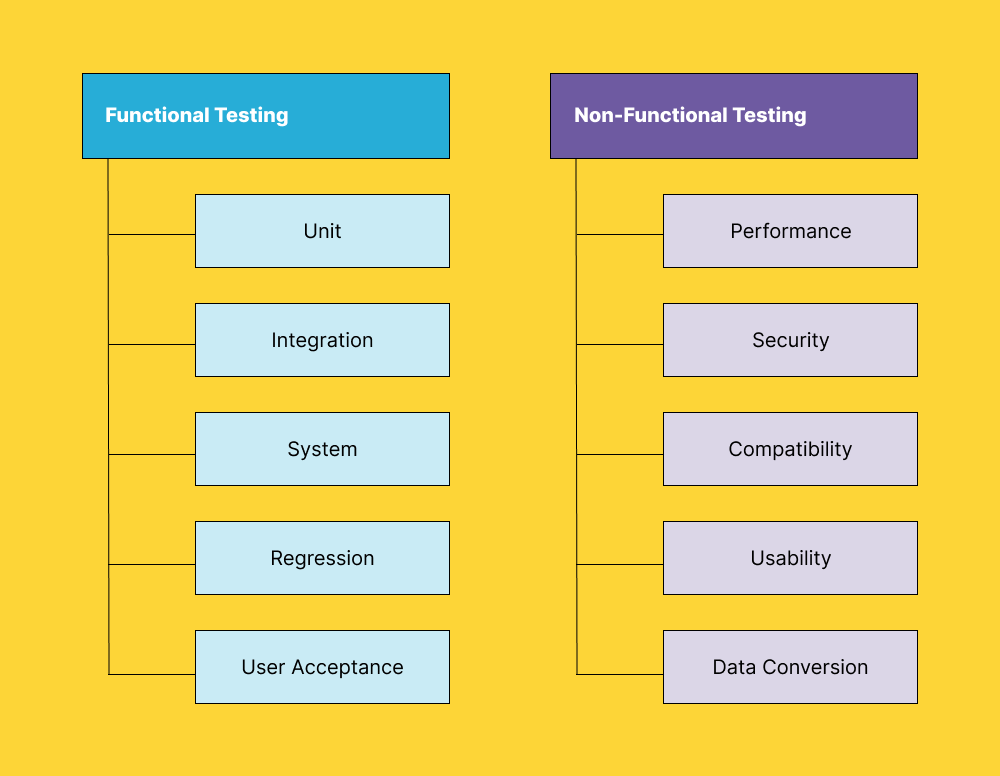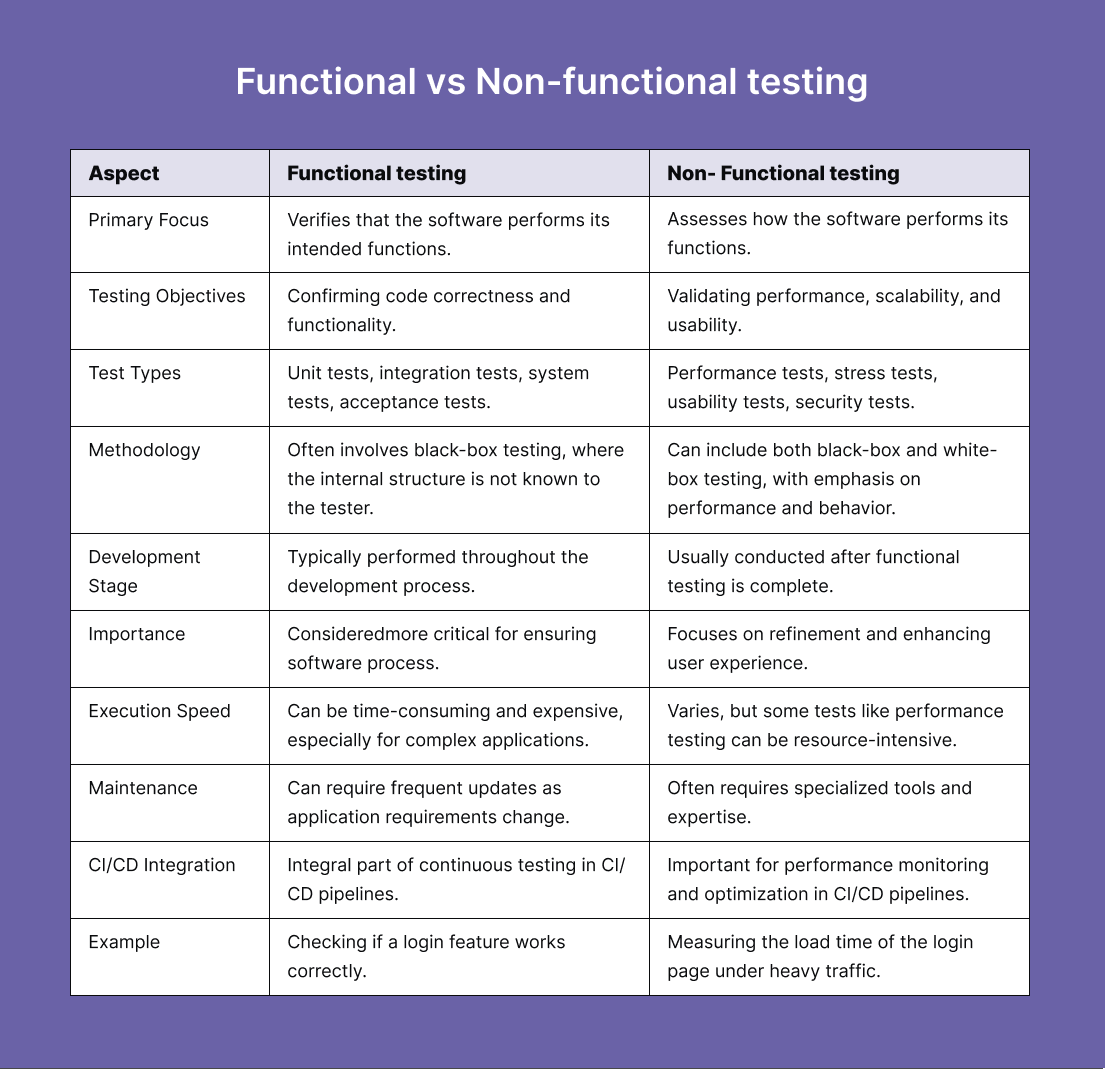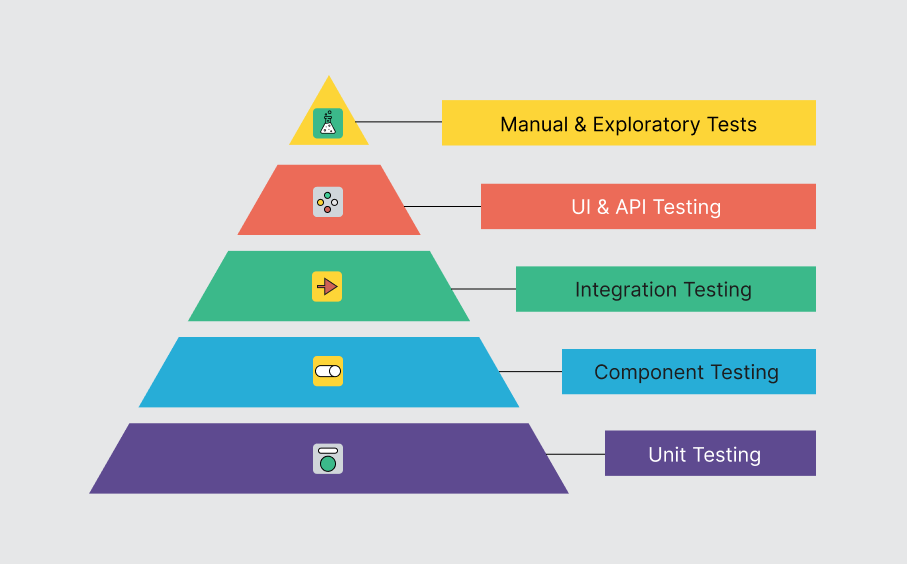-
How we help
- Does my software work?
- Does it work for all users?
- Global Growth Toolbox
- Industries
-
Platform
- Platform
- Integrations
- Browse all test types
- Add-on services
- Pricing
- Resources
Best practices for functional testing by Global App Testing
Functional tests are designed to show that your product works to specification. This guide will tell you what that means in more detail, and how to plan and execute functional tests well – everything from selecting the best possible functional test breakdown to undertaking a range of products and services in functional testing.
P.S., this is our informational page. For our commercial page, hit the button below.

The success of a web or mobile app hinges not just on its aesthetics or user experience but fundamentally on its ability to perform core tasks flawlessly. Functional testing stands at the heart of this, serving as the critical checkpoint before software greets the world. In 2020, the software industry learned this the hard way, incurring over $2 trillion in losses due to poor-quality software. This stark figure underlines the monumental importance of functional testing - a process not just about ticking off a checklist but ensuring a seamless, error-free user journey.
What is functional testing, and why do we do it?
Functional software testing is any type of software testing that focuses on verifying the system behaves to specification. Much functional testing is built around "test cases" – scripts that describe the intended result of taking action in a piece of software based on the software documentation. Testers are asked to take the described action and verify that the result is the intended result. Functional testing is performed for several crucial reasons:1. Verify software requirements: It ensures the software operates according to the defined requirements. This includes checking each function by providing appropriate input and verifying the output against the specified requirements.
2. Identify defects early: It helps identify any functional flaws or errors, allowing developers to address them before they become more complex and costly to fix.
3. Enhance user experience: Ensuring that each software function works as intended contributes to a smoother, more reliable user experience, essential for user satisfaction and retention.
4. Compliance with standards: In some cases, functional testing is necessary to ensure the software complies with certain industry standards or regulatory requirements, particularly in fields like finance, healthcare, and aviation.
5. Reduce risks and costs: Catching and fixing bugs early in the development cycle helps reduce the risk of failures after deployment, which can be costly and damaging to the company's reputation.
6. Support continuous improvement: Regular functional testing allows for continuous monitoring and improvement of the software, ensuring it adapts to changing requirements or environments.
How is functional testing different from non-functional testing?
Functional testing ensures that the software performs its intended functions correctly. In contrast, non-functional testing assesses how well the software performs those functions. Both types of testing evaluate front-end and back-end aspects, and they often intersect in the tests conducted.

Functional testing is generally considered more critical. It verifies that the software effectively addresses the problems it's designed to solve. Non-functional testing, focusing on implementation details and performance, usually serves as a refinement aspect. However, it gains importance in scenarios where scalability is key.

A balanced approach to testing includes a mix of functional and non-functional methods. Developers often use the "testing pyramid" concept, prioritizing unit testing due to their speed and ease of writing. As we move up the pyramid, developers perform fewer integration tests, eventually leading to user acceptance testing at the top. The higher levels of the pyramid are reserved for tests that may be more expensive but provide greater value. Integrate functional and non-functional tests into a continuous integration and continuous deployment (CI/CD) pipeline to optimize costs and efficiency.
Types of functional tests

A) Test cases vs exploratory tests
The bulk of most functional testing is from test cases that are described above: they are scripts of steps with an expected outcome specified for every step. We would also recommend exploratory testing, which asks testers to find bugs without scripts or test cases by using critical examples of bugs and inviting them to play with and explore the software – these complement test cases that may miss edge cases or critical areas where bugs can build.
B) Automated vs manual functional testing
To what extent a QA team should automate its functional tests depends on factors which include:
- How often will the test be reused?
- How easy is it to automate the test?
- The likelihood of automated test flaking (e.g., due to a changing product), etc.
- Many of our clients pursue automation-first testing approaches and use Global App Testing to manage their supply of QA labor flexibly and effectively to support that automation. Or to handle tests that can't be automated for now.
C) Regression functional testing vs release testing
Regression testing focuses on verifying that the existing functionality of a software application remains unaffected after new changes or updates have been introduced. Release testing, also known as release validation or pre-production testing, is performed to validate a software application before it is released to end-users. It is a critical step in the software development lifecycle. With Global App Testing, you can identify your build stage (from prototype through to live product) and execute test cases or exploratory tests on any of them.
D) Version and compatibility testing
Version and compatibility testing in software testing aims to ensure that your software works well with different versions (e.g., 1.1, 1.2, etc.) and different environments – including OS systems, browsers, platforms, devices, or any other device. Managing devices, versions, and geographies is challenging to do in-house and is one natural advantage outsourced QA providers accrue over in-house teams.
E) Reproducibility testing and bug fix verification
Re-testing and bug fix verification are what they sound like. Reproducibility retesting is sometimes performed to understand the extent of a problem – when a bug is discovered, you may wish to immediately test it again in another production environment to see what's happening there (i.e., is this a version thing, or does this result remain accurate in every device and OS?).
A bug fix verification would ensure that once you've fixed the bug, the application is again working to specification. Our test launch platform lets you immediately retest software from the results view.
F) Other well-known functional test “types”: smoke, unit, integration
Some kinds of functional tests are also worth mentioning but are nonexclusive with the above tests and are worth mentioning here:
- Smoke testing is a common sense test that takes place at the start of a testing suite to verify whether the application works in a broad sense and that it's sensible to continue testing. It's a broad but shallow test of many system parts to ask, "Is it broken?" For example, a smoke test is a standard part of a regression test suite.
- The "unit" in "unit testing" refers to the smallest testable component of a software application. It typically refers to a single codebase function, method, or procedure. The idea is to isolate as small a code area as possible for review. The extreme end would be "system testing," which tests the entire software system end-to-end and is a common last-step procedure.
- Hardware testing, available for IoT products via Global App Testing, requires some kind of physical test that cannot be done through an emulator. Practically, this may include sending and receiving signals: Bluetooth, LIDAR, laser, sound, and other physical product attributes.
- Integration tests: Besides being a common failure point, it can also be more complicated to automate and run in an emulator because it may involve software outside your system.
Some software categories, such as payments and gaming, require specialist techniques and feedback styles, and these are good things to look out for when planning a software test. These include payments and blockchain, gaming, and AI. Most of the above test "types" are non-exclusive – you could have an automated compatibility test case set as part of your total regression testing suite, for example.
What kind of functional testing should I be doing?
Process
Functional testing strategies vary based on the business and software type. Here are some universally applicable best practices:- Automation observations: Businesses often overestimate their ability to automate testing. For instance, while many expect to automate 20% more tests, the reality is often just an increase of about 1%. A common hurdle is the high proportion of flaky tests.
- Exploratory tests: These are cost-effective for bug finding after a particular stage but are frequently underutilized.
- Test case prioritization: Focus on the likelihood and severity of bugs. High-risk areas, such as legal and safety, should be prioritized. Consider using random or revolving priorities to cover the system over time.
- Test management software: Investing in solid software can significantly reduce wasted time.
- Regression testing focus: This will likely form the majority of testing efforts, so monitoring its operations and expenses is crucial.
- QA as a business function: Align QA closely with business goals. Clear objectives and frameworks will enhance the quality process, especially in identifying areas for improvement in live products.
Where to start?
Consider this framework: Requirements Analysis > Test Planning > Test Case Design > Execution > Defect Reporting
Tailor each stage to your specific strategy.
Strategy by industry
Different industries tend to have different priorities, for example:- E-commerce: The testing strategy may focus on product search, shopping cart functionality, payment processing, and order management.
- Banking and Finance: Testing would include verifying account management, transaction processing, security measures, and compliance with financial regulations.
- Healthcare: Healthcare: The strategy might involve testing patient records management, medical appointment scheduling, billing systems, and integration with medical devices.
- Gaming: Testing would cover gameplay mechanics, user interactions, graphics, sound, and multiplayer functionality.
- Social Media: The strategy may encompass testing user registration, profile management, content sharing, privacy settings, and notifications.
These are just a few examples, but the functional testing strategy can be tailored to meet the specific needs of any business domain. It's important to align the testing activities with the unique functionalities and requirements of the system being developed.
Optimizing functional testing: 6 best practices
1. Strategic test case selection
Choose test cases for automation wisely. Ideal candidates for automation include:- Tests that are run frequently.
- Tests executed with varying data sets.
- High-priority tests (P1, P2) that are time-consuming.
- Tests that are susceptible to human error.
- Tests across multiple operating systems, browsers, and devices.
2. Form a dedicated automation team
Automation demands specific skills and knowledge. Assess the capabilities of your QA team and assign automation tasks to those best equipped for them, as not everyone may be adept at script writing or tool handling.
3. Implement data-driven tests
Design automated test cases to be reusable with multiple data sets. Store data in XML files, text files, or databases to simplify maintenance and enhance the utility of existing scripts.
4. Adaptability to UI changes
Stay vigilant for potential changes in the user interface. For instance, a change in UI can affect how tools like Selenium locate page elements. Write test cases that require minimal adjustments in case of such changes.
5. Frequent testing
Develop a core set of automated tests and execute them regularly. This strengthens the test automation framework and helps uncover more bugs.
6. Testing on real devices and browsers
For accurate results, test in conditions that mimic real user environments. Global App Testing offers the capability to run functional tests on a wide range of actual device and browser combinations.
Functional testing tools and services
Some great tools and services are out there to help you improve your functional testing:
Global App Testing
Global App Testing is a service that allows you to launch manual tests anywhere worldwide and receive your test results in less than two days. Crowdtesting, a product testing method, involves utilizing a diverse group of professional testers worldwide. Global App Testing, for instance, currently boasts a pool of over 90,000 testers and expects continuous expansion. Crowdtesting combines the benefits of specialized testing service providers and automated tests. These advantages include:- Extensive availability of devices and workforce
- Global availability and a large tester base
- GitHub
- Jira
- Zephyr
- TestRail
- Azure DevOps
- Slack
They fit the following categories:
Functional test management tools
Tools like TestRail can help organize and manage test cases, test suites, test plans, and execution results. They often provide test case creation, version control, scheduling, and reporting features.
Functional test automation tools
These tools assist in automating the execution of test cases. They enable testers to record and playback user actions, generate test scripts, and execute tests repeatedly. Test automation tools also offer features for data-driven testing, regression testing, and integration with continuous integration/continuous delivery (CI/CD) pipelines.
Test frameworks
Test frameworks provide a foundation for organizing and executing automated test scripts. They typically include libraries, coding conventions, and guidelines for structuring tests. Frameworks often support various programming languages and offer utilities for assertions, test data management, and test reporting.
Web testing tools
These tools specialize in testing web applications. They provide:
Capabilities for simulating user interactions.
Validating web page elements.
Handling dynamic content.
Performing cross-browser testing.
Web testing tools may also offer features for load testing and performance testing.
Performance testing tools
These tools help assess applications' performance and scalability under different loads and conditions. They measure response times, throughput, and resource utilization and identify performance bottlenecks. Performance testing tools often include features for load testing, stress testing, and capacity planning.
Security testing tools
Security testing tools aim to identify vulnerabilities and weaknesses in applications. They assist in detecting common security flaws, such as SQL injection, cross-site scripting (XSS), and insecure authentication. Security testing tools may include vulnerability scanners, penetration testing tools, and code analysis tools.
Code review tools
These tools focus on analyzing the source code of applications to identify programming errors, coding standards violations, and potential bugs. They help improve code quality, maintainability, and adherence to best practices. Code review tools often support static code analysis, code metrics, and code review workflows.
How can Global App Testing enhance your functional testing
Global App Testing (GAT) can streamline your processes, elevate your product quality, and accelerate feature delivery with a blend of exploratory tests, defined test cases, and advanced targeting controls. Functional testing services include:- Extend your QA team: Our 24/7 service ensures test results are returned within 6 hours, even for overnight launches. This makes GAT an ideal resource for handling sudden increases in testing needs.
- Elevate quality: We have honed our tester pool for optimal performance by catering to specialized and high-stakes clients.
- Broaden test coverage and compatibility: With a reach in 190 countries and compatibility with any device or operating system, we offer extensive location-specific and compatibility testing options, ensuring comprehensive coverage.
Don't let quality be an afterthought in your development process. Embrace the power of comprehensive functional testing and see how our expertise can streamline your workflow, enhance product quality, and accelerate your time to market. Book a free call with our specialist today!
Keep learning
10 Software testing trends you need to know
10 Regression testing tools to consider in 2025
10 QA mobile testing types you need to know about
Need help with functional testing?
We’d love to give you a personal demo of our platform. Find out how we manage, execute and analyse functional test results to help you release high quality software anywhere in the world.
